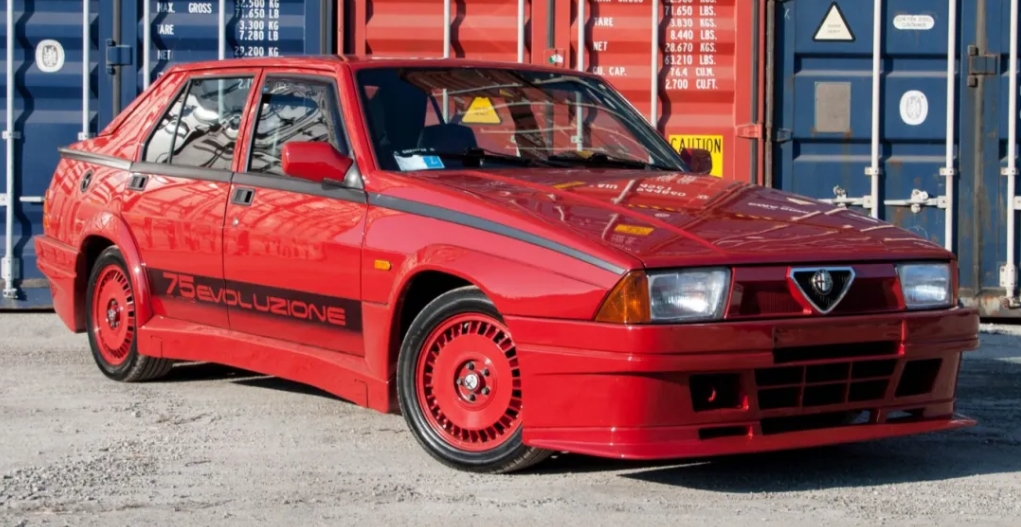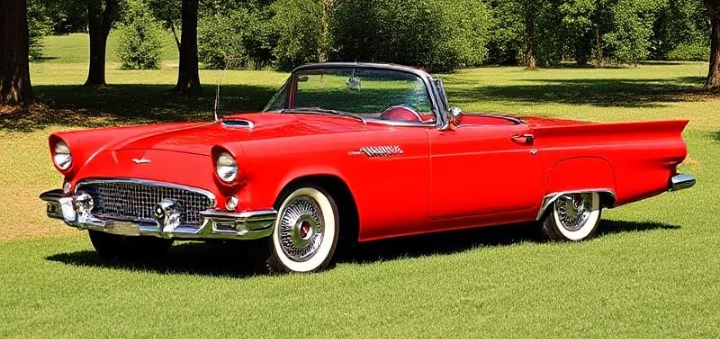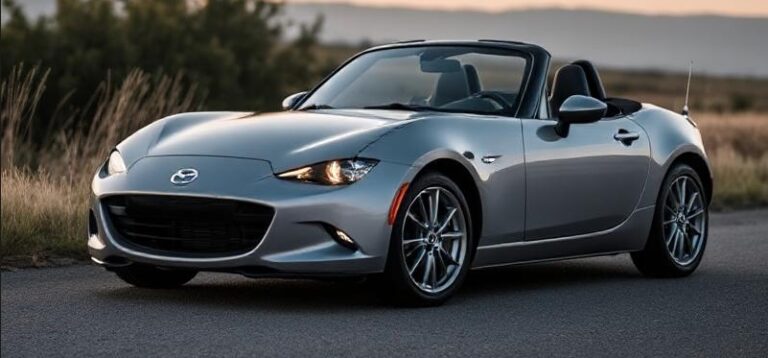The Alfa Romeo 75 Evolution: The Last Stand of a Motoring Dynasty
In the pantheon of classic automobiles, some cars are remembered for their flawless execution, while others are cherished for their untamed character. The Alfa Romeo 75 belongs firmly in the latter category. Launched in 1985 to celebrate the company’s 75th anniversary, it was more than just a new model; it was a defiant roar from a legendary marque teetering on the brink. Born from ingenuity and necessity, the 75 was the last car developed by an independent Alfa Romeo before its acquisition by Fiat in 1986. Its story is one of brilliant engineering, passionate design, and the poignant end of a golden era.
The Genesis: Engineering Purity on a Budget (Pre-1985)
By the mid-1980s, the state-owned Alfa Romeo was in dire financial straits. The development budget for a successor to the aging Giulietta (Nuova) was virtually non-existent. Instead of starting from a clean sheet, Alfa’s engineers were tasked with a masterful act of automotive recycling. They turned to the proven ‘Type 116’ platform that had underpinned the Alfetta since 1972 and the Giulietta since 1977.
This platform was no ordinary architecture. It featured a sophisticated and expensive transaxle layout, where the engine was mounted longitudinally at the front, while the clutch and gearbox were housed with the differential at the rear. This configuration provided near-perfect 50/50 weight distribution, a holy grail for handling dynamics. Paired with a De Dion tube rear suspension and inboard disc brakes (to reduce unsprung weight), the chassis was a thoroughbred sports sedan foundation.
The design, penned by Ermanno Cressoni at the Centro Stile Alfa Romeo, was a product of its time—an aggressive, unapologetic wedge. A low nose, high tail, and a sharp, continuous crease running the length of the body gave it a purposeful stance. Quirks abounded, from the eccentric U-shaped handbrake designed to avoid contact with the driver’s arm, to the overhead console housing switches for the electric windows. These weren’t flaws; they were declarations of an individualistic Italian character, a stark contrast to the sober functionality of its German rivals.
The First Wave: The Launch Line-up (1985–1987)
The Alfa Romeo 75 was officially unveiled in May 1985 with a range of engines that showcased the company’s heart and soul: its legendary twin-cam four-cylinders and the symphonic “Busso” V6.
1.6: The entry-level model featured a 1,570cc version of the classic Alfa Romeo Twin Cam engine. Fed by twin Dell’Orto carburettors, it produced a respectable 110 horsepower, offering spirited performance for its class.
1.8: A step up, the 1,779cc Twin Cam, also carburetted, delivered 120 horsepower. This was often considered the sweet spot of the initial range, blending balanced handling with eager engine response.
2.0: The top four-cylinder model used a 1,962cc Twin Cam with two double-barrel carburettors, producing 128 horsepower. It was a classic Alfa experience—a rev-happy engine that sang its way to the redline.
2.5i Quadrifoglio Verde (QV): The flagship was powered by the magnificent 2,492cc “Busso” V6. With Bosch L-Jetronic fuel injection, it produced 156 horsepower. It wasn’t just the power; it was the sonorous, metallic howl of this engine that defined the QV. It also featured a limited-slip differential, revised suspension settings, and a subtle body kit.
2.0 TD: Catering to the diesel-centric European market, Alfa offered a 1,995cc turbo-diesel engine sourced from VM Motori. With 95 horsepower, it provided torque and economy, though it lacked the acoustic drama of its petrol siblings.
For the North American market, the car was launched in 1986 as the Alfa Romeo Milano. Due to federal regulations, it was exclusively available with the V6 engine. The initial trim levels were Silver, Gold, and Platinum, all featuring the 2.5-litre Busso V6 and the prominent, impact-absorbing bumpers that visibly distinguished it from its European counterpart.
The Turbo Era and Technical Brilliance (1986–1988)
Alfa Romeo quickly moved to expand the 75’s appeal, introducing two of its most iconic and technologically advanced variants.
1.8 Turbo (1986): This was Alfa’s potent answer to the BMW 325i and Mercedes-Benz 190E 2.3-16. Based on a 1,779cc Twin Cam block, engineers added a Garrett T3 turbocharger, an intercooler, and advanced fuel injection. The result was 155 horsepower, nearly matching the 2.5 V6 but delivered with a thrilling, lag-then-surge character that was addictive. Known as the “Turbo America” in some markets, it often sported the US-spec bumpers and side skirts.
2.0 Twin Spark (1987): Arguably one of the greatest four-cylinder engines of the era, the Twin Spark was a masterpiece. The 1,962cc engine featured two spark plugs per cylinder for more efficient combustion, a redesigned cylinder head with narrower valve angles, and—critically—variable valve timing (VVT) on the intake camshaft. This combination allowed for strong low-end torque and a ferocious top-end rush, producing 148 horsepower. The Twin Spark replaced the carburetted 2.0 and immediately became the critics’ choice for its blend of performance, sound, and sophistication.
3.0 V6 America (1987): The larger 2,959cc Busso V6 from the US-spec Milano was introduced to the European market. Badged as the “3.0 America,” it adopted the Milano’s impact bumpers and body kit. With 188 horsepower from its Bosch L-Jetronic fuel-injected engine, it offered a significant performance jump over the 2.5 QV.
The Homologation Legend: 75 Turbo Evoluzione (1987)
To compete in the burgeoning World Touring Car Championship, Alfa Romeo needed to homologate a special version of its 1.8 Turbo. The result was the legendary 75 Turbo Evoluzione. Only 500 examples were built. To comply with Group A regulations that factored in turbo displacement, the engine was slightly de-stroked to 1,762cc. While its official power output was the same 155 horsepower as the standard turbo, it was widely understood that the race-bred engine could be easily tuned for much more. The Evoluzione was instantly recognizable by its aggressive fiberglass body kit, including flared wheel arches and a deeper front spoiler, and was available almost exclusively in Rosso Alfa. It remains the most collectible and sought-after 75 of all.
Second Series: The Facelift and Refinement (1988–1992)
Under Fiat ownership, the 75 received a subtle mid-life update in 1988. The cosmetic changes were minor, intended to modernize the design without significant investment. The front grille was revised with new slats, the taillights became all-red units, and the interior received updated graphics for the instruments and new upholstery patterns. The more significant changes were under the bonnet, as fuel injection and catalytic converters became more widespread.
The updated lineup included:
1.6 IE and 1.8 IE: The smaller four-cylinder engines received single-point fuel injection and, in many markets, catalytic converters. This slightly reduced peak horsepower but improved driveability and emissions compliance.
2.0 Twin Spark: Continued as the definitive four-cylinder model, now often equipped with a catalytic converter which slightly lowered its output to 145 horsepower.
1.8 Turbo Quadrifoglio Verde: The standard Turbo model was now often badged as a QV, aligning it with the top-performance trims.
3.0 V6 QV “Potenziata” (1990): The definitive road-going 75 arrived. The 3.0-litre Busso V6 was upgraded with Bosch Motronic fuel injection and revised camshafts, boosting power to 192 horsepower. This version, known as the Potenziata (uprated), was the fastest and most powerful standard production 75. It combined the thrilling performance of the Turbo with the sublime soundtrack and linear power delivery of the V6.
2.4 TD: The diesel engine was enlarged to 2,393cc, increasing power to 112 horsepower and providing a substantial torque increase, making it a more capable long-distance cruiser.
.
Many car aficionados have multiple hobbies, like boating as well as auto stuff. Those who don’t already own a boat (and even some that do), may have thought about building their own boats. It’s really not as hard as you’d think. Just take a look at these easy boat building plans!

.
The Final Curtain (1992)
Production of the Alfa Romeo 75 saloon ceased in 1992. The last of the transaxle Alfas had run its course. It was replaced by the Alfa Romeo 155, a technologically advanced car that shared its platform with the front-wheel-drive Fiat Tipo. While the 155 would go on to achieve immense success in motorsport, for the Alfisti, its arrival marked a profound and melancholic turning point. The lineage of rear-wheel-drive, transaxle-equipped Alfa Romeo saloons that began with the Alfetta was over.
The Alfa Romeo 75 was a car of beautiful contradictions. It was a parts-bin special built on a shoestring budget, yet it possessed one of the most sophisticated chassis of its day. Its cabin ergonomics were famously eccentric, yet its driving position was perfectly oriented for spirited driving. It was a four-door family saloon that handled with the poise and balance of a dedicated sports car.
In its seven-year production run, the 75 evolved from a charismatic carburetted sedan into a fuel-injected, turbocharged, and technologically advanced performance machine. From the humble 1.6 to the ferocious Turbo Evoluzione and the glorious 3.0 V6 Potenziata, every model shared the same core DNA: a deep-seated passion for the art of driving. Today, the Alfa Romeo 75 stands as a monument—a flawed, brilliant, and utterly unforgettable machine that represents the last, pure-blooded stand of an independent Alfa Romeo.







